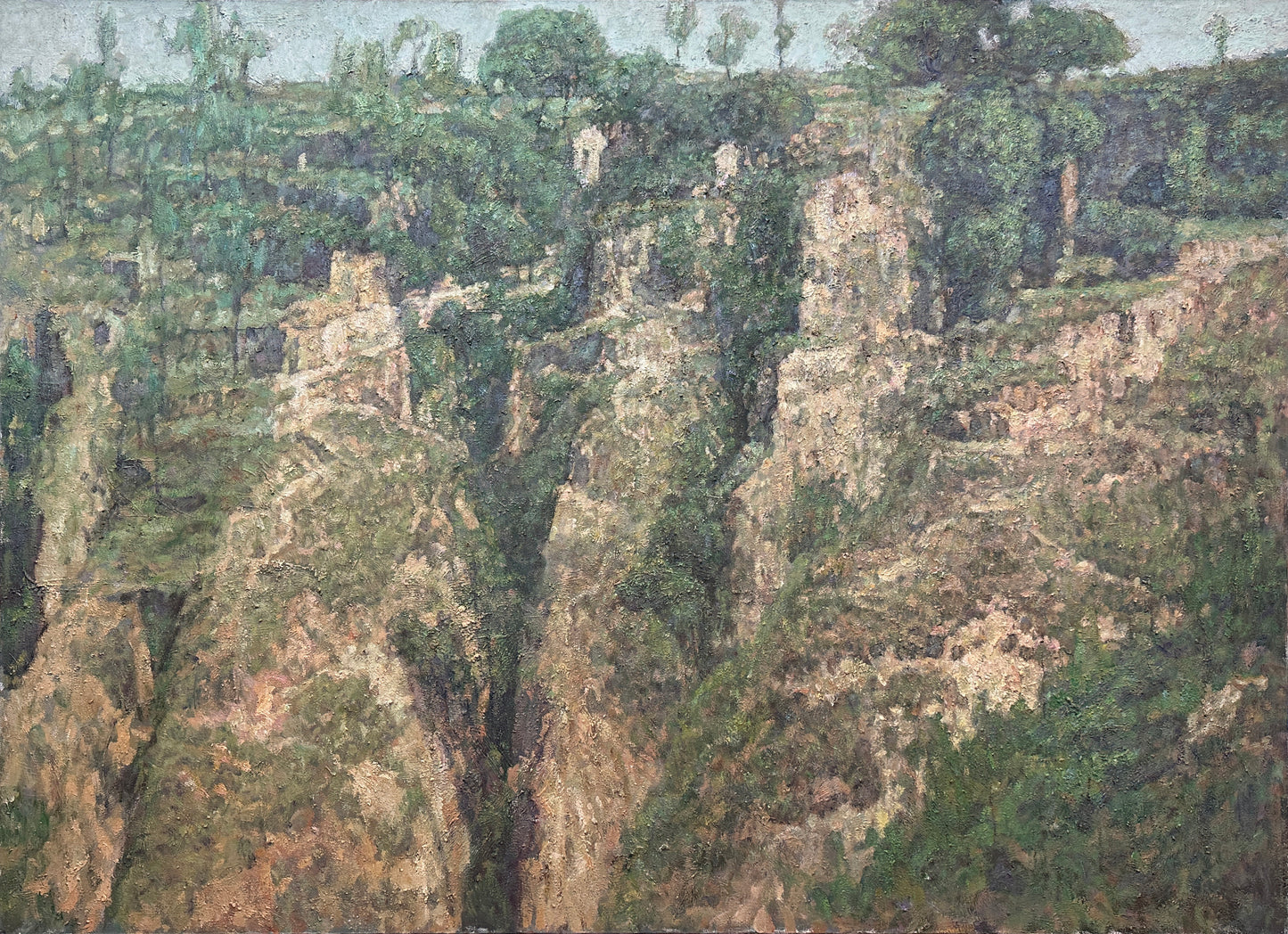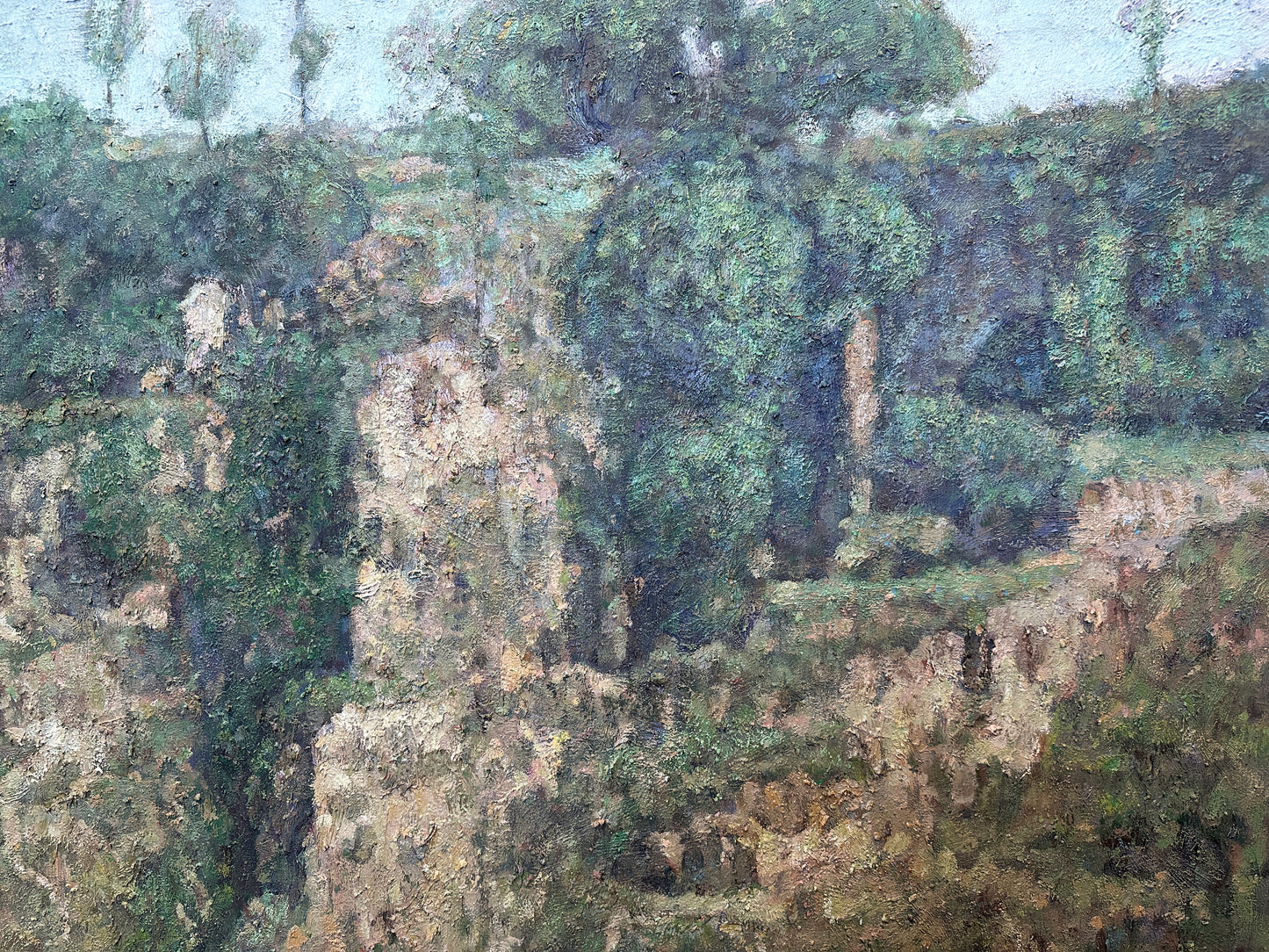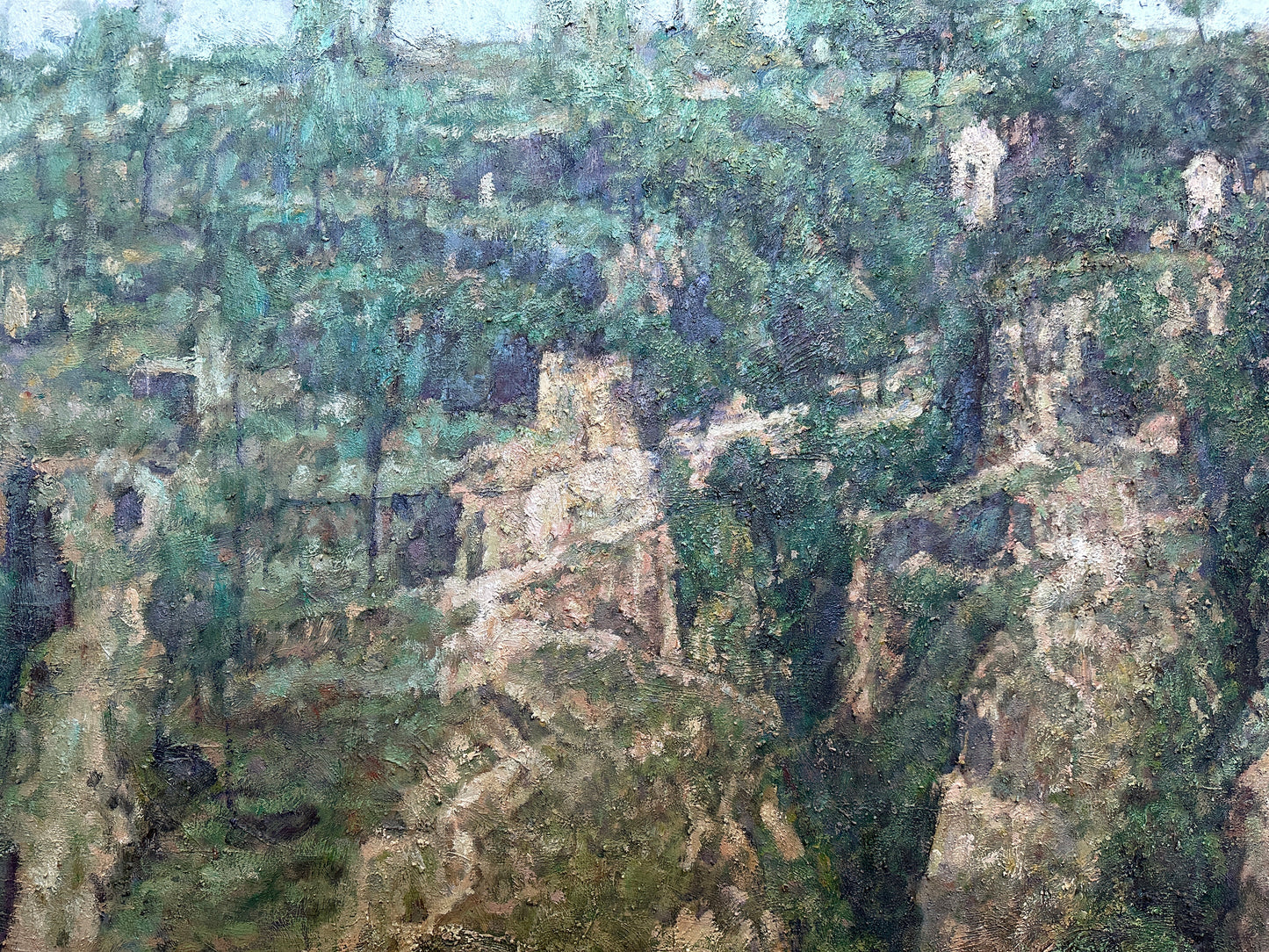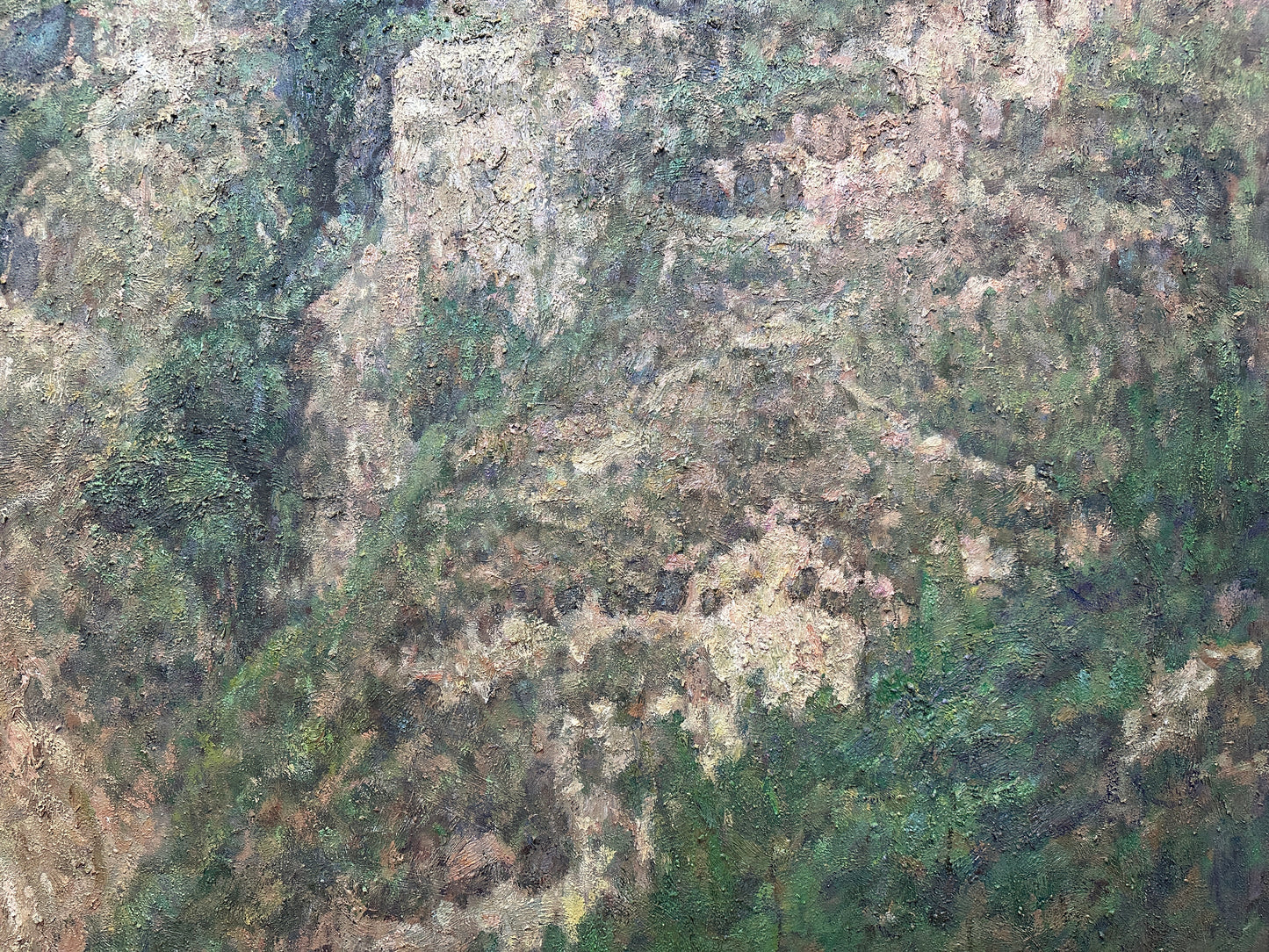bqt.art
Changwu in June, 2005
Changwu in June, 2005
Couldn't load pickup availability
Share
Artist: Wang Xing Ping 王興平
Title: Changwu in June | 長武六月
Materials: Oil on canvas
Size: 150 x 200 cm | 59 x 79 in (Mounted Frameless)
Rarity: Unique
Medium: Painting
Signature: No
Condition: Excellent
Frame: No
The oil painting titled Changwu in June by Wang Xing Ping.This analysis will rely on interpreting the title and associated cultural, environmental, and artistic elements that such a scene might evoke.
"Changwu in June"
The title suggests a depiction of Changwu—a possible reference to a physical location, historical figure, or cultural motif—during the month of June. Changwu could be a town, a province, or a region in China, carrying historical or cultural significance. June, as the early summer month, conveys a sense of life, transition, warmth, and abundance. Together, the title evokes themes of place, time, and seasonal ambiance, likely emphasizing a specific regional identity enhanced by the interplay of natural and human elements.
Potential Artistic Elements to Explore
1. Color Palette
- Warm Tones and Lush Greens: June, being a summer month, may inspire a vibrant and lush color palette. If the painting represents the countryside or natural landscapes, one might expect the dominant use of greens symbolizing growth and vitality. These could be contrasted with yellowish tones of sunlight, blue skies, or warm earth tones.
- Symbolism of Colors: The use of bright, vivid colors might evoke feelings of warmth and optimism. In traditional Chinese painting and philosophy, green often symbolizes life and renewal, while reds and yellows (if present) could hint at prosperity or cultural celebration.
2. Compositional Balance
- If the painting depicts a specific location in Changwu, it might feature balanced elements of nature (fields, trees, rivers) and human influence (villages, roads, or cultural landmarks). The composition might reflect the harmony between humans and nature, a common theme in traditional Chinese landscapes.
- The placement of elements—whether emphasizing vast open fields or bustling town life—might reflect the artist's intentions to showcase either solitude, community, or the interconnectedness of both.
3. Light and Atmosphere
- Light might play a significant role in evoking the feeling of June. A warm, golden sunlight bathing the scene could suggest the height of summer, while softer, diffused light could create a nostalgic or serene mood.
- Atmospheric effects, such as mist, haze, or the clarity of the air, could add depth to the painting, suggesting either the freshness of the morning or the stillness of midday.
4. Brushwork and Texture
- If the painting employs bold, expressive brushstrokes, it might capture the energy and dynamism of summer. Conversely, softer, more delicate strokes could suggest a meditative or romanticized view of the landscape.
- The texture created by oil paint could add dimensionality to the work, making elements like foliage, water, or architectural details appear more tactile and alive.
5. Cultural and Historical Context
- If Changwu holds cultural or historical significance, the painting might include architectural or symbolic elements—such as temples, pagodas, or agricultural fields—that anchor the scene in a specific time and place. These elements might reflect the traditions, livelihoods, or heritage of the region.
- The celebration of a specific time (June) might also hint at seasonal festivals, agricultural milestones, or historical events tied to Changwu.
6. Mood and Emotion
- The overall mood of the painting could range from tranquil and idyllic to vibrant and bustling, depending on how the artist portrays the relationship between people, nature, and the season. A serene depiction of Changwu might evoke a sense of nostalgia or reverence for rural life, while a lively scene could celebrate the energy and abundance of summer.
Broader Artistic Themes
1. Seasonality and Transience:
- The choice of June as a focal point highlights the transient beauty of seasons, a recurring theme in both Western and Eastern art traditions. The painting may explore how nature and human activity align with the rhythms of time, emphasizing the fleeting yet eternal cycles of life.
2. Connection to Place:
- By tying the painting to Changwu, the artist roots their work in a tangible or symbolic geography. This sense of place might reflect a personal connection, a desire to document, or a means of celebrating Changwu’s unique identity.
3. Harmony Between Humanity and Nature:
- Traditional Chinese art often emphasizes the harmonious coexistence of humans and their environment. If this painting follows that tradition, it may subtly critique modern detachment from nature or celebrate a simpler, pastoral way of life.
---
Final Thoughts
Without seeing the painting, "Changwu in June" suggests a deeply evocative exploration of place, season, and culture. Its artistic choices—from color palette to composition—likely strive to capture not only the visual beauty of Changwu during early summer but also its emotional, cultural, and symbolic essence.








